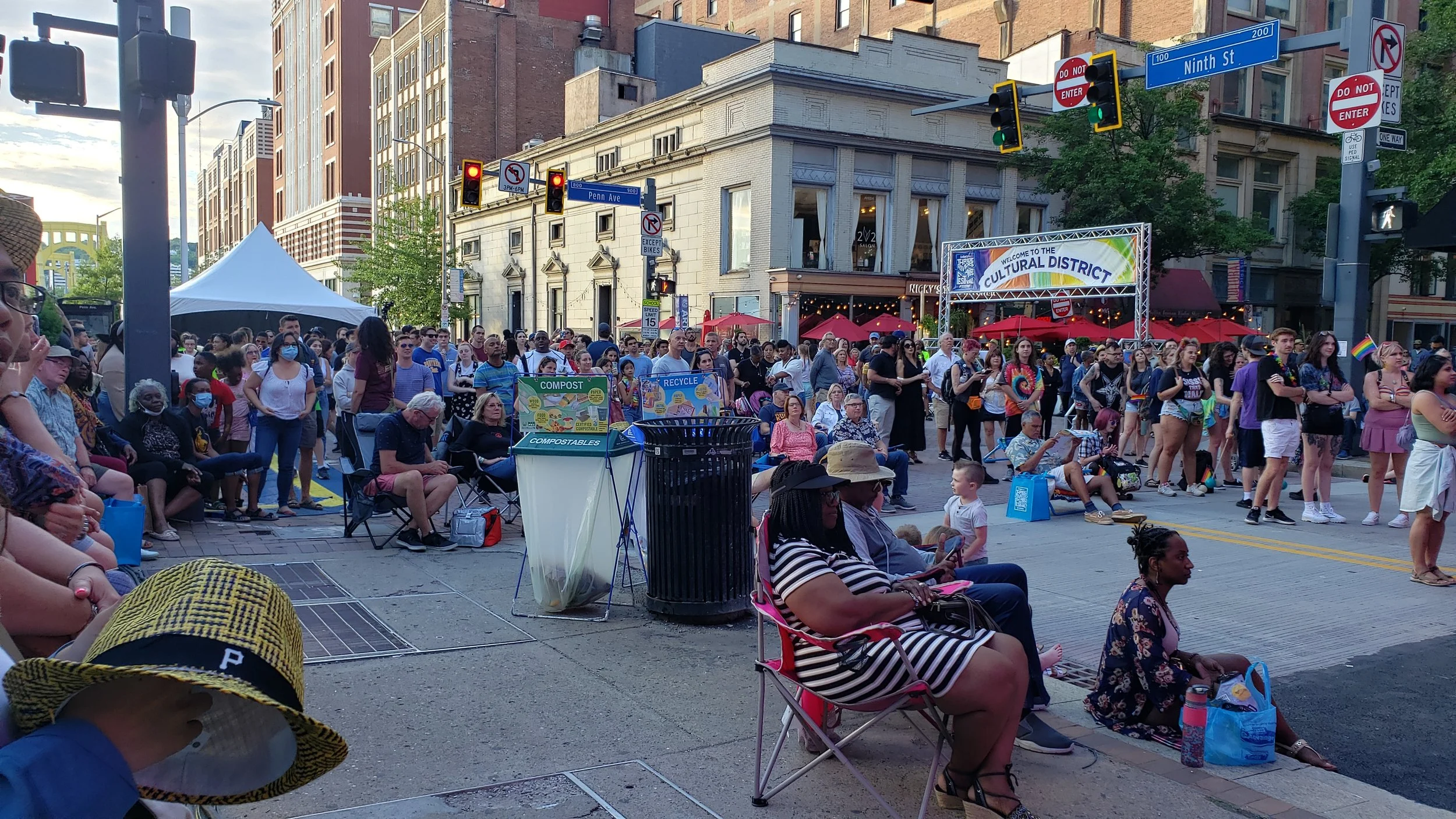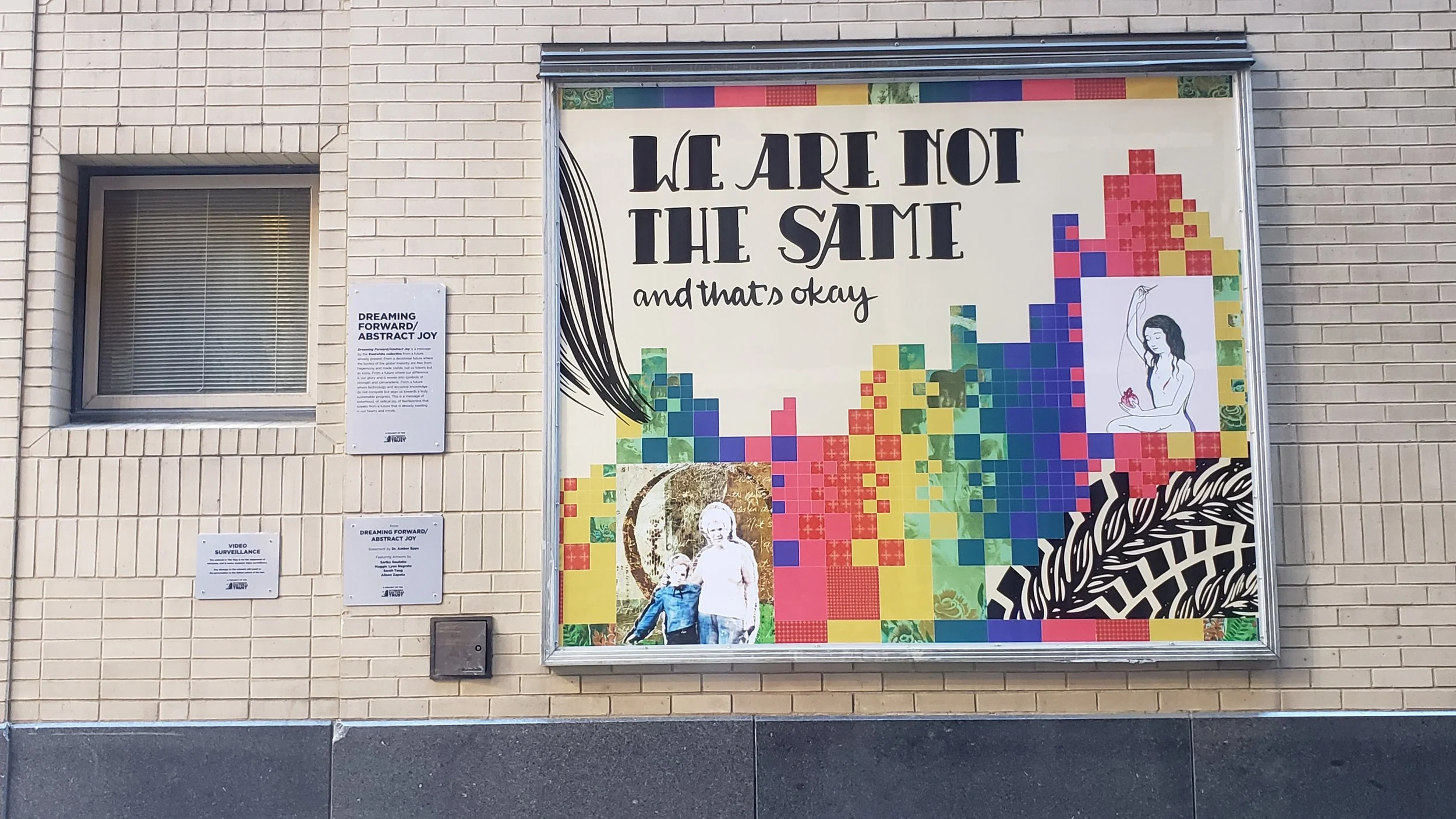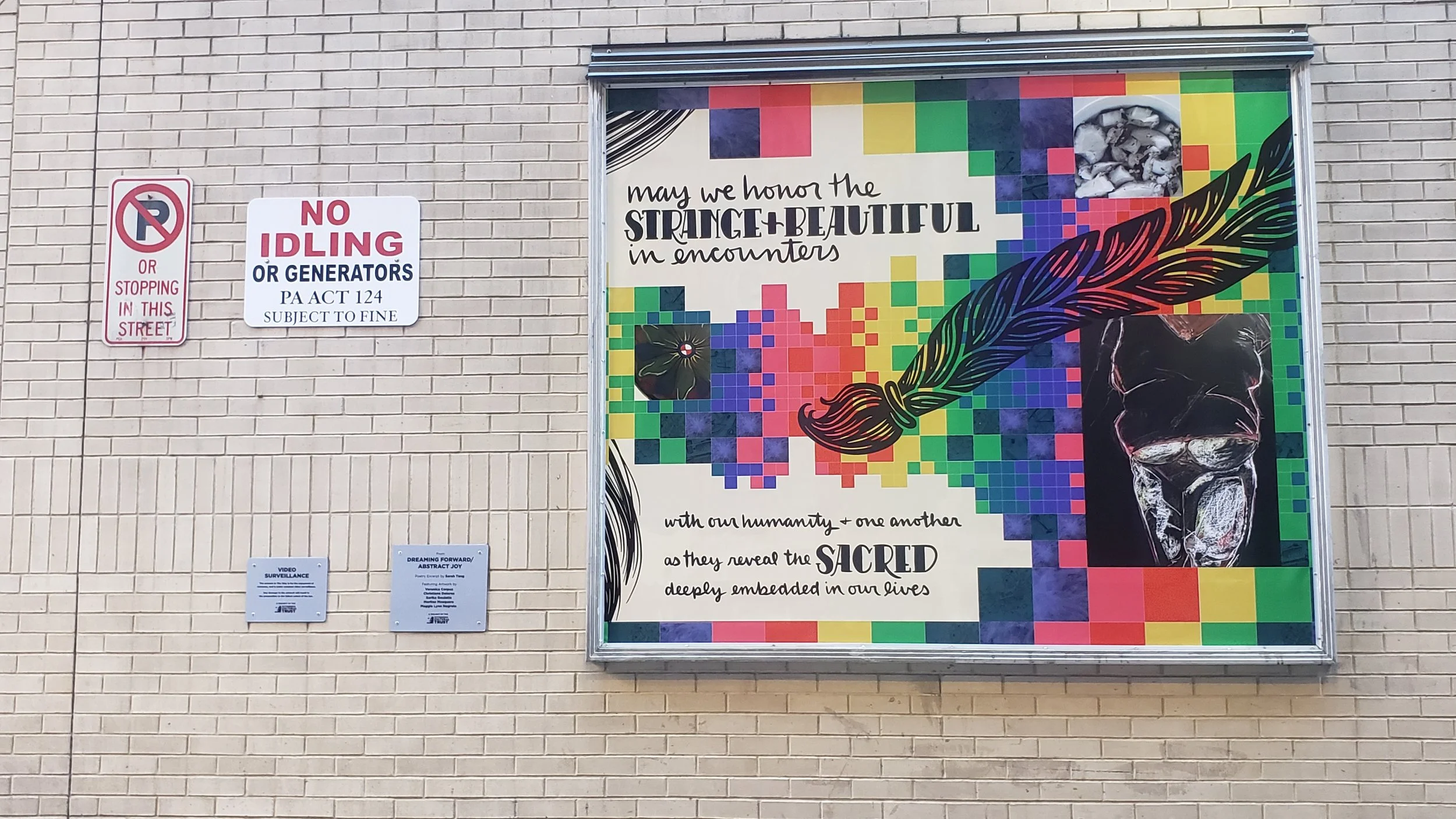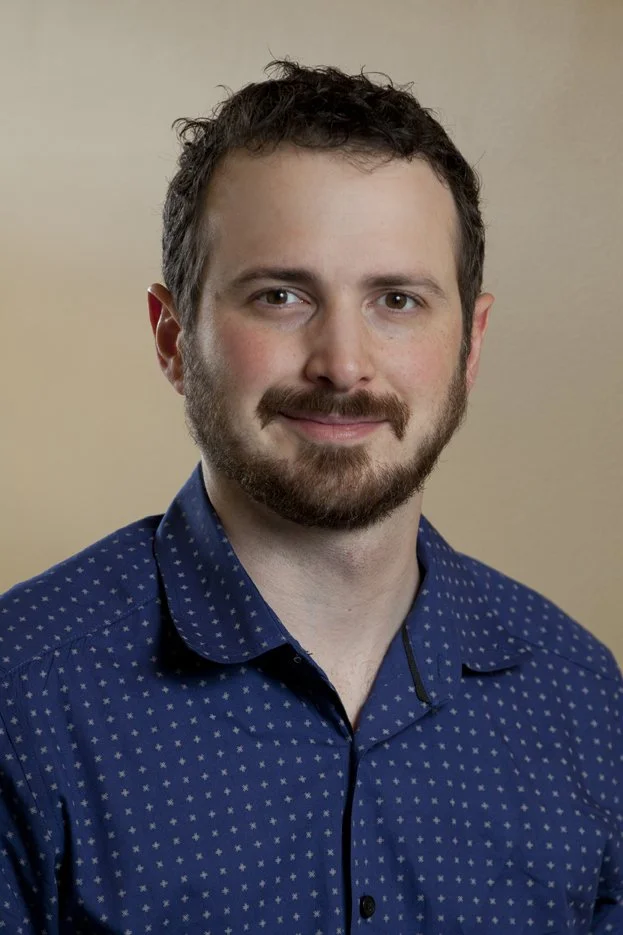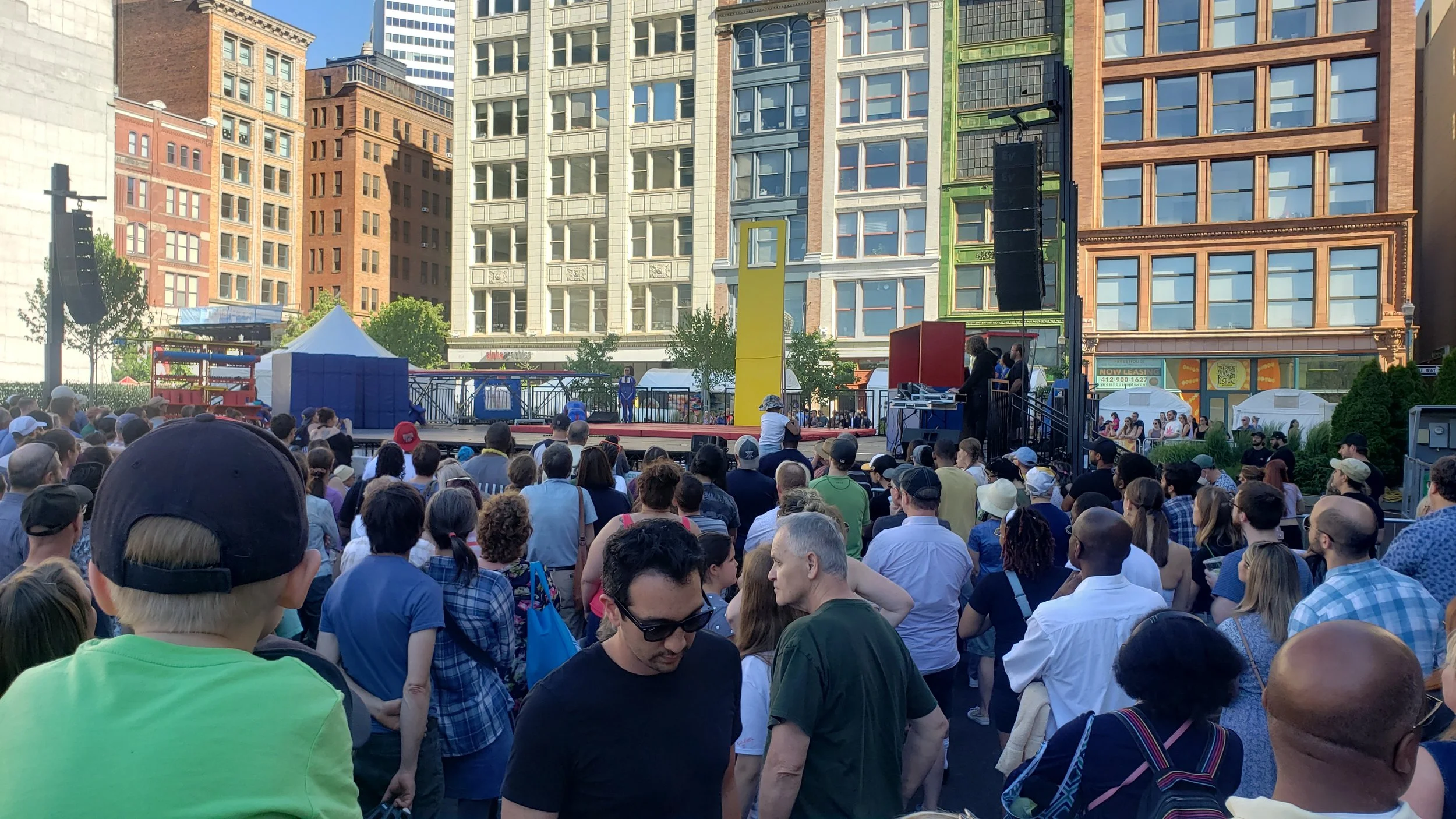We Are Not the Same and That’s Okay: A Day at the Three Rivers Arts Festival
We Are Not the Same and That’s Okay
A Day at the Three Rivers Arts Festival
by Joshua Tarquinio
Saturday, June 6, 2022, was the second day of the Three Rivers Arts Festival, back for the first time since the COVID-19 pandemic hit. The weather was best described as delightful. Upper 70s and sunny, with tall buildings that provided plenty of shade and a river valley that supplied a refreshing breeze. This year, the event took place in the streets of the Cultural District in Downtown Pittsburgh, as opposed to Point State Park. I liked it better this way.
At the Point, the artist booths had been in a line, which meant every TRAF-goer who wanted to check out the goods had to walk in that line either left or right. Everybody was in each other’s way. This time, the booths were broken up into clusters. Some lined Penn, some were in parking lots. There were off-shoots and alleys and, “oh look, a little chill area behind the bleachers.”
Moving everything to the streets meant restaurants and bars were handy. When I arrived around 4 p.m., I was hungry. As much as I love chicken on a stick, it sure was luxurious to be able to duck into a place for a comfy seat and some a/c. When I’d finished, I stepped outside and was back at the festival.
Knowing other people would report on the event, I struggled to think of an angle for mine. Surely someone would write a general review, and maybe someone else would examine exhibits or talk to artists or audience about their experience. All the creators have websites though. All the galleries have their promotions. All the attendees always say, “This is great. We come down every year. It’s a nice day out for the family. Et cetera,” so I didn’t want to be redundant. What was left for me? Which way would I turn the prism to find something new? I took my inspiration from an installation hidden in plain sight.
Behind the Benedum Center, connecting Penn and Liberty Avenues, is the alley Tito Way. Downtown regulars know it as the cut-through with the Cell Phone Disco where signals from nearby devices make an array of LEDs dance. This year, the Benedum’s back wall hosts another art project too: Dreaming Forward/Abstract Joy.
Penn Avenue bustled near Tito. The Eagle, a new restaurant, was open for business. Every seat was full every time I walked by. The lot between 8th and 9th had two stages, bleachers, a fake lawn, and food stands. Along the street stood, you guessed it, artist tents and other vendors. But Tito was almost desolate. On Penn, I navigated through a swarm of humans (and some pets) in the broiling Sun, always in someone’s way, excusing myself, sidestepping, head aswivel.
One step into Tito and I was out. Out of the noise, out of the heat, out of the way. I could stop, breathe cool air, stretch, swing a cat without hitting anything. I could stand and stare at a piece of art for as long as I wanted, and that was what I did.
Four massive panels comprise the installation. A statement from Dr. Amber Epps on a nearby plaque describes:
Dreaming Forward/Abstract Joy is a message by the #notwhite collective from a future already present. From a decolonial future where the bodies of the global majority are free from hegemony and made visible, not as tokens but as icons. From a future where our difference is our glory and is woven into symbols of strength and camaraderie. From a future where technology and ancestral knowledge do not compete but align us towards a truly sustainable progress. This is a message of sisterhood, of radical joy, of fearlessness that speaks from a future that is already swelling in our hearts and minds.
Artists credited include Sarika Goulatia, Maggie Lynn Negrete, Sarah Tang, and Alison Zapata.
The author of this article would like to pause to recognize he’s a cis-het white male just trying to do better and that he might have a blind spot or two as he describes the above piece and ties it in with what he noticed at the festival. Although, he’s confident that art is both subjective and for everyone.
The first panel is the one that draws and maintains my focus. In bold black letters, it reads, “WE ARE NOT THE SAME,” and underneath, in cursive, “and that’s okay.” Portrait photos are interspersed and collaged into a rainbow of pixelation. An illustrated woman takes a needle and thread to her own heart.
On the second panel, more rainbow pixels, an illustration of a braid of hair, a depiction of an obese body with the colors flipped negative. The lettering elaborates, “may we honor the STRANGE + BEAUTIFUL in encounters.” Then below, “with our humanity + one another as they reveal the SACRED deeply embedded in our lives.”
I stood in shady Tito Way absorbing the words alone but for a handful of passers-by who never broke their strides. The piece reminded me of how many arguments I’ve had about the differences between basic equality and true equity. I recalled Stephen Colbert lampooning Bill O’Reilly who declared, “I don’t see color.” There in an alley, in my head, I finished a six-year-old Facebook argument with someone whose stance was that the problems of completely different people are essentially the same because we’re all human.
Their gist is that we all play on the same field, but that position fails to acknowledge that different people have different experiences, and sometimes ability, class, station, and even color play a part. On the same field, some people are exempt from touching the bases. Some must clear hurdles. Some drag weights.
We are not the same. It’s okay to acknowledge that. The question is whether your acknowledgment is disparaging, or honoring, or helping, or hindering. Equality does not mean homogeneous. Equality means giving and receiving the same respect despite differences. Equality means being able to be the only person like you in a sea of people and still feel safe as yourself.
We live in a polarized time with people choosing up sides and defending them with vehemence. Even people on the same side are fighting. Families, neighbors, and old friends are turning into enemies. The differences between good and bad have gone from glaringly obvious to nuanced and, for some, tedious. The issue is like a worn shirt.
“My shirt had a huge tear, so I changed into a different one. Now you’re telling me this shirt has wrinkles, threads hanging off, and a little stain nobody will notice unless they’re looking for it? Haven’t I done enough? When will the criticism of my clothes end?”
The answers to the questions are yes, no, and when your clothes are perfect. Your button-down may never be pristine, but it’s up to you to iron the wrinkles, snip the threads, and clean the stains as best you can. A flawless blouse is the ideal, but your best effort is all anybody expects. If you want to look good, don’t trust people who tell you that you already do. Friends don’t let you walk around with mustard stains. Be brave enough to hear about your wrinkles so you can iron them, so you don’t have to keep hearing about them, so you look good.
From what I saw, there were a lot of clean shirts at the Three Rivers Arts Festival this year. Near the end of the day, I arrived at the corner of 9th and Penn in front of the main stage just as the penultimate band finished. The people dispersed and chaotic foot traffic commenced. I still hadn’t made any notes on the day, so I thought I should find a place to write. Without an idea of exactly how my piece would go, I decided to scribble until the subject clarified itself. I knew I wanted to tie Dreaming Forward/Abstract Joy to the state of the world, but I hadn’t determined how the two of them would tether to the Arts Festival.
From the curb, I looked all over trying to puzzle out where to go. My feet and legs felt fine, although my messenger bag was getting heavy after four hours of walking around. A high top at a chill bar would have been killer—me doing the romantic lone journalist thing with my pen and book and fedora and an Old Fashioned. On the corner, I stood visualizing the establishments one by one, up and down, left and right. They were all packed. No room for writers.
Someone on the street called out to someone else and stole my focus. I watched them interact. My mind began to color in details of their lives. Not wanting to be nebby, I shifted my attention to the French fry stand. Nothing special to report. What was I doing? Oh yeah, trying to think of a place to write. I flipped through my mental list of decent downtown spots for another minute before being once again distracted by the bustle before me. Then I realized the corner was the place to start writing, because it was where I’d found the connection to the other two parts of my piece.
“We are all human.” “We are not the same, and that’s okay.” Yes, we are all human, but there are different kinds, and here they all were celebrating creativity—a major driving force of humanity—together. Rich people, poor people, middle class people, black, white, and in-between people, guys in tie dye shirts with long hair, Pirates fans, Pride revelers, artists, critics, people talking loudly on their phones, couples taking pictures, old guys with Styrofoam cups, teenagers with Afros, dads in baseball t-shirts, hot girls with tattoos, toddlers working off sugar highs with young fathers in tow, lesbians in rainbow socks, dudes in NBA jerseys, people in folding chairs in front of an empty stage, people holding hands, people laughing, people announcing that they’re going to the Eagle, a WESA reporter with headphones on sticking a microphone in people’s faces, Hawaiian shirts, strollers, sandals, sun hats, ball caps, cool people, dorks, people who used to be cool, people who used to be dorks, hugs, kisses, hellos, and good-byes.
The Sun disappeared behind the buildings, and the bustle before me bloomed into an audience. Madeline Edwards took the stage to close out the night. Her sound was a crowd-pleasing mix of broadly palatable styles. She and her band did a little something for all the different kinds of people at the intersection of 9th and Penn. And all the different kinds of people got down together, sang together, laughed together, and cheered together, all wearing less-than-perfect shirts, and it was better than okay.
Joshua Tarquinio is a novelist and the co-creator of the Mr. Bones arts and entertainment video magazine and social media entity. He has been working in media production in Pittsburgh since 2006.

